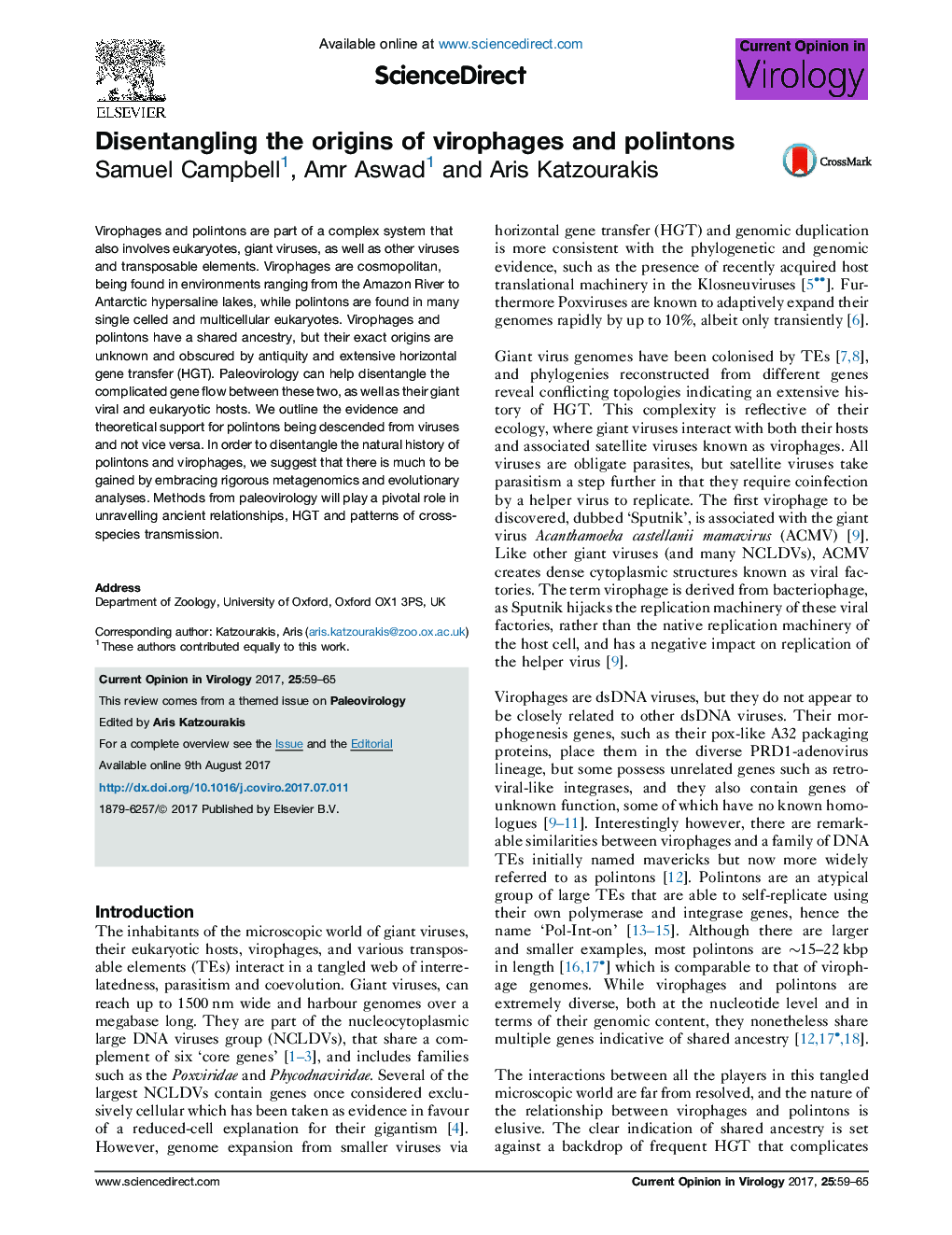| Article ID | Journal | Published Year | Pages | File Type |
|---|---|---|---|---|
| 5546199 | Current Opinion in Virology | 2017 | 7 Pages |
â¢Horizontal gene transfer occurs between polintons, virophages and their hosts.â¢Virophages and polintons have a shared but obscured ancestry.â¢We outline the evidence for a virus first origin for polintons and virophages.â¢Gene-by-gene analyses will unravel the natural history of polintons and virophages.â¢Paleovirological techniques can be used to test alternative hypotheses.
Virophages and polintons are part of a complex system that also involves eukaryotes, giant viruses, as well as other viruses and transposable elements. Virophages are cosmopolitan, being found in environments ranging from the Amazon River to Antarctic hypersaline lakes, while polintons are found in many single celled and multicellular eukaryotes. Virophages and polintons have a shared ancestry, but their exact origins are unknown and obscured by antiquity and extensive horizontal gene transfer (HGT). Paleovirology can help disentangle the complicated gene flow between these two, as well as their giant viral and eukaryotic hosts. We outline the evidence and theoretical support for polintons being descended from viruses and not vice versa. In order to disentangle the natural history of polintons and virophages, we suggest that there is much to be gained by embracing rigorous metagenomics and evolutionary analyses. Methods from paleovirology will play a pivotal role in unravelling ancient relationships, HGT and patterns of cross-species transmission.
